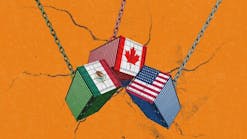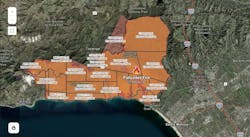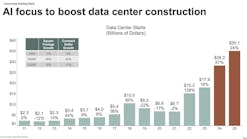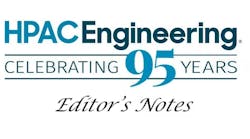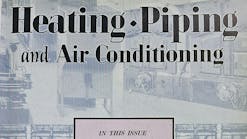"Are you better off now than you were four years ago?"
Incredibly, that familiar political slogan has re-entered the national conversation again spring. And no matter whom you intend to vote for next fall, I hope we can all agree that it's not really a hard question to answer.
Four years ago was March 2020, the month that the U.S. economy all but shut down and the Coronavirus pandemic officially took over our lives. For months, we had watched from afar as Covid-19 spread from Asia, to Europe and Africa before finally reaching America's shores.
Think back for a moment to the mounting anxiety that gripped our nation in those early days. Not long after, sirens blared 24/7 in communities across the U.S. With hospitals overflowing; schools, stores and offices closing; new vaccines not yet available; and daily public health updates increasingly grim, fear consumed us. Fear for the well-being of our families, our friends, and our livelihoods. The very future of the world economy seemed in doubt. Remember that?
So, honestly, who among us would trade 2024 for a repeat of 2020?
Need data? On March 21, 2024, the Dow Jones Industrial Average closed at a record high of 39,781.37. Four years ago, the week the world shut down, the Dow closed March 20, 2020, at 19,173.98.
Granted, the Dow doesn't measure everything. But clearly, the U.S. economy is not in free fall today. Thank goodness.
Now, I bring this up not just for the sake of accuracy, but also to remind us of all the hard work, sacrifice, courage, ingenuity and resilience that went into bringing us back to where we are today. Indeed, if we forget where we were, then we forget what this society, and our industry, actually went through and then managed to accomplish to regain public health and restore public confidence.
So, you are not remembering things incorrectly. On the contrary, too many of us lost friends and loved ones and suffered related health challenges over the last four years to blithely erase our own gritty contributions to this remarkable recovery.
Doctors, nurses, scientists, engineers and other essential workers all helped to bring us back. In our industry, in particular, the ASHRAE Epidemic Task Force worked tirelessly to study Covid-19's rapidly changing data and to produce reasoned recommendations on indoor air quality for virtually every building type. The goalposts changed constantly and public support for various mitigation measures shifted, but the effort level of engineering volunteers around the world never wavered.
And this required after-hours work from exhausted people, like you, who also had their own loved ones, jobs, and businesses to worry about. Let us not forget any of that.
######
While we're all refreshing our memories, let me note here that this May will mark the 95th anniversary of HPAC Engineering's first publication. That's no small achievement in any day and age.
We even had our own baptism of fire back then, launching just five months before the stock market crash that would trigger the Great Depression. But in May 1929, Chicago publisher Domestic Engineering enthusiastically unveiled its newest new trade journal: Heating, Piping and Air-Conditioning magazine. At that time, there were 7,000 HVAC engineers, contractors, and supervising and operating engineers who subscribed nationwide. Today, we have five times that amount.
In our inaugural issue, founding editorial director R.V. Sawhill explained our raison d'être:
“The design, installation and operation of heating, piping, and air-conditioning systems equipment afford an opportunity for an engineering editorial service which is limited only by the possibilities for improving human comfort and health and increasing production efficiency... This issue is the first step in a carefully reasoned program of operation aimed to supply the technical and practical information and data needed in this work.”
That remains our mission today, as it was four years ago, and will be 95 more years down the road. Thank you for joining us on this historic and unpredictable journey.
##########
